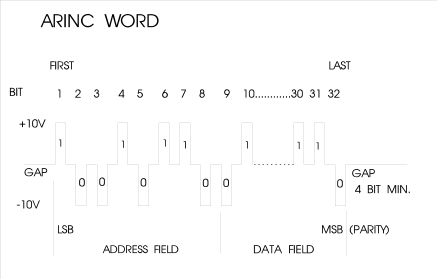|
|
|
ARINC 429 ARINC Specification 429 is a definition of standards used extensively by the air transport industry for the transfer of digital data between avionics systems elements. Systems which are utilising this standard have been installed in a wide range of aircraft including European Airbus, Boeing 737, 747, .. 767 and a large number of small aircraft and Helicopter. The ARINC Specification 429, by defining a single standard for the transfer of digital information, eliminates the need for complex interfaces between avionics systems produced by different manufactures. This provides those avionics components that conform to this standard with a virtual "plug_in" capability, and gives such components a certain measure of universality. According to Specification 429 digital data is transmitted via a differential signal over an uni-directional bus composed of two twisted and shielded wires. The data is send in thirty-two bit words, each word containing a parity bit and an eight bit label that defines the flight function to which the remaining data pertains. This data, encoded in either numeric (binary or BCD) or alphabetic format, is further devided into various fields according to label type. In order to completely standardise communication and prevent conflicts, all flight functions have been assigned a particular label and data format. Two data rates are standardised, 100 k BIT/sec and 12.5 k BIT/sec.
|
 |
| [Home] [Products] |